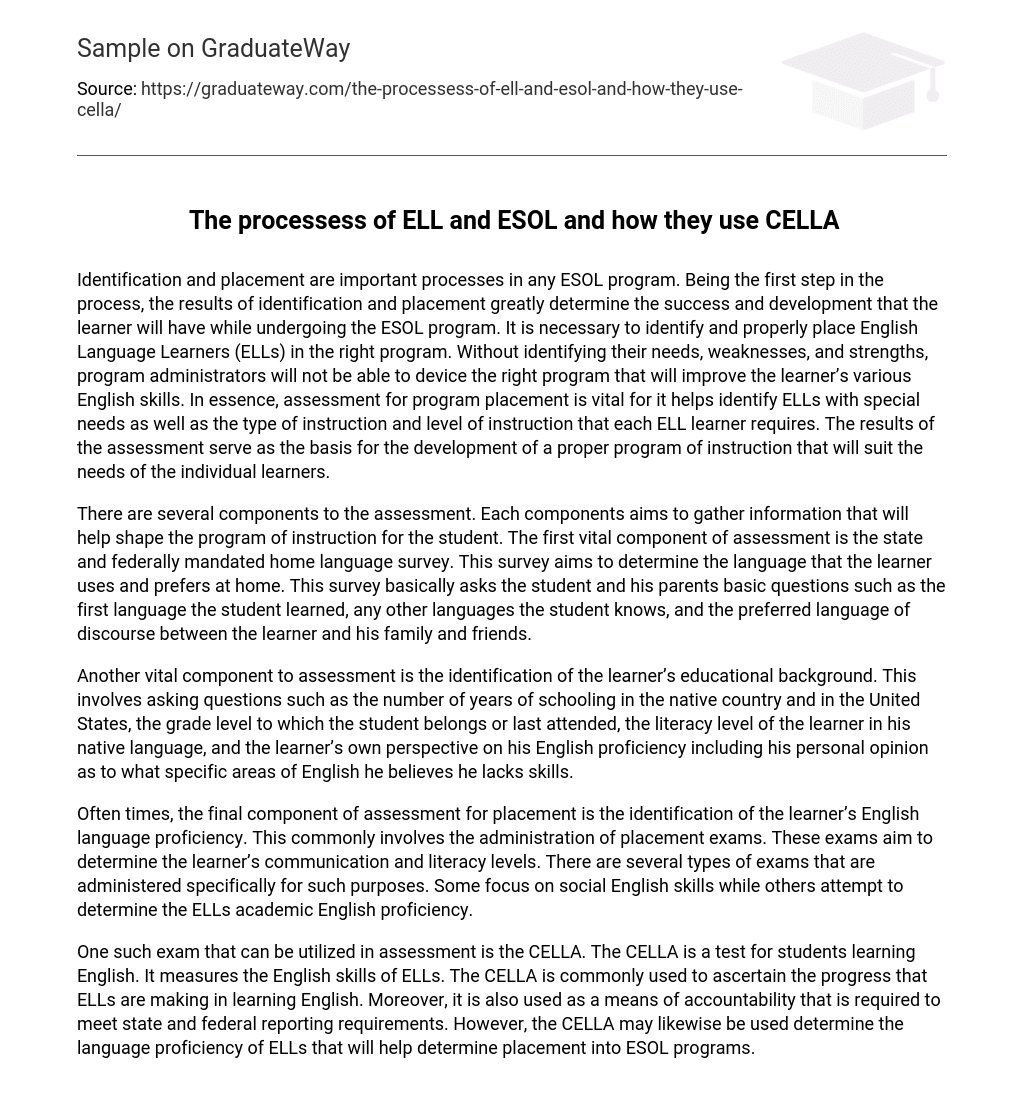Identification and placement are important processes in any ESOL program. Being the first step in the process, the results of identification and placement greatly determine the success and development that the learner will have while undergoing the ESOL program. It is necessary to identify and properly place English Language Learners (ELLs) in the right program. Without identifying their needs, weaknesses, and strengths, program administrators will not be able to device the right program that will improve the learner’s various English skills. In essence, assessment for program placement is vital for it helps identify ELLs with special needs as well as the type of instruction and level of instruction that each ELL learner requires. The results of the assessment serve as the basis for the development of a proper program of instruction that will suit the needs of the individual learners.
There are several components to the assessment. Each components aims to gather information that will help shape the program of instruction for the student. The first vital component of assessment is the state and federally mandated home language survey. This survey aims to determine the language that the learner uses and prefers at home. This survey basically asks the student and his parents basic questions such as the first language the student learned, any other languages the student knows, and the preferred language of discourse between the learner and his family and friends.
Another vital component to assessment is the identification of the learner’s educational background. This involves asking questions such as the number of years of schooling in the native country and in the United States, the grade level to which the student belongs or last attended, the literacy level of the learner in his native language, and the learner’s own perspective on his English proficiency including his personal opinion as to what specific areas of English he believes he lacks skills.
Often times, the final component of assessment for placement is the identification of the learner’s English language proficiency. This commonly involves the administration of placement exams. These exams aim to determine the learner’s communication and literacy levels. There are several types of exams that are administered specifically for such purposes. Some focus on social English skills while others attempt to determine the ELLs academic English proficiency.
One such exam that can be utilized in assessment is the CELLA. The CELLA is a test for students learning English. It measures the English skills of ELLs. The CELLA is commonly used to ascertain the progress that ELLs are making in learning English. Moreover, it is also used as a means of accountability that is required to meet state and federal reporting requirements. However, the CELLA may likewise be used determine the language proficiency of ELLs that will help determine placement into ESOL programs. The CELLA or the Comprehensive English Language Learning Assessment tests four areas of language proficiency, listening, speaking, reading, and writing. Also, the CELLA has four test levels which each contain tests for the four areas of proficiency. Upon completion of the test, the learner receives a student report. This report contains information about the results of the student. The most notable section of the report contains the scale scores. The students scale scores are better understood with the scale anchor points that are likewise provided in the report. The closest anchor point to the student scores best describes what the learner knows and is able to do in the English language. Basically, such descriptions describe the proficiency of the learner in each of the four areas tested. These then may serve as basis for placement decisions for the learner and the type of ESOL program that he may require.
Reference
Florida Department of Education. (2008). CELLA interpretative guide. Retrieved 21 September 2008 from: http://www.fldoe.org/aala/pdf/interpretive_english.pdf.





